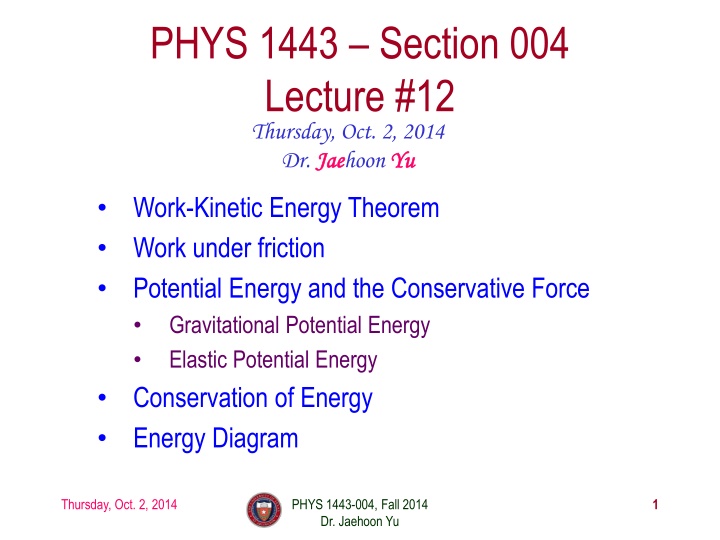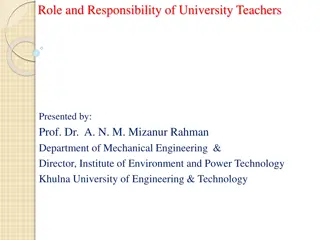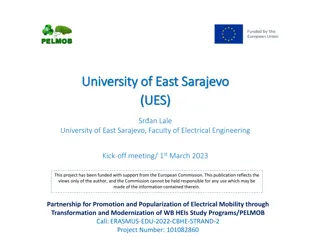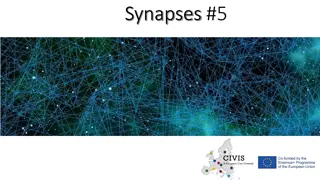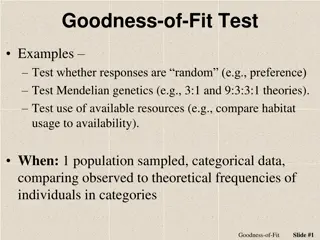University of Sarajevo - Information and Highlights
The University of Sarajevo (UNSA) is the first university in Bosnia and Herzegovina, founded in 1949. It is a public institution with 23 faculties, 3 academies, and 7 research centers/institutes. With over 22,000 students, including approximately 800 international students, and around 2,640 staff members, UNSA is a significant educational hub. The university offers a wide range of study programs, including over 500 programs following the Bologna Education System. Sarajevo, the capital city, is known as a student city, fostering both local and international academic communities. UNSA boasts notable achievements, such as producing a Nobel Prize winner in literature and being involved in post-war rebuilding management. The university's inclusive and comprehensive approach to education sets it apart as a true bridge between cultures and civilizations, reflecting Bosnia and Herzegovina's unique blend of East and West influences.
Download Presentation

Please find below an Image/Link to download the presentation.
The content on the website is provided AS IS for your information and personal use only. It may not be sold, licensed, or shared on other websites without obtaining consent from the author.If you encounter any issues during the download, it is possible that the publisher has removed the file from their server.
You are allowed to download the files provided on this website for personal or commercial use, subject to the condition that they are used lawfully. All files are the property of their respective owners.
The content on the website is provided AS IS for your information and personal use only. It may not be sold, licensed, or shared on other websites without obtaining consent from the author.
E N D
Presentation Transcript
PHYS 1443 Section 004 Lecture #12 Thursday, Oct. 2, 2014 Dr. Jae Jaehoon Yu Yu Work-Kinetic Energy Theorem Work under friction Potential Energy and the Conservative Force Gravitational Potential Energy Elastic Potential Energy Conservation of Energy Energy Diagram Thursday, Oct. 2, 2014 PHYS 1443-004, Fall 2014 Dr. Jaehoon Yu 1
Reminder for Special Project #4 Two protons are separated by 1m. Compute the gravitational force (FG) between the two protons (10 points) Compute the electric force (FE) between the two protons (10 points) Compute the ratio of FG/FE (5 points) and explain what this tells you (5 point) You must specify the formulae for each of the forces and the values of necessary quantities, such as mass, charge, constants, etc, in your report Due: Beginning of the class, Tuesday, Oct. 7 Thursday, Oct. 2, 2014 PHYS 1443-004, Fall 2014 Dr. Jaehoon Yu 2
Work and Energy Involving Kinetic Friction What do you think the work looks like if there is friction? Static friction does not matter! Why? Then which friction matters? Friction force F Ffr fr works on the object to slow down The work on the object by the friction F Ffr fr is Wfr= The negative sign means that the work is done on the friction! It isn t there when the object is moving. Kinetic Friction F Ffr fr M M ( )=-Ffrd vi vf KE = -Ffrd Ffrdcos 180 d The final kinetic energy of an object, taking into account its initial kinetic energy, friction force and all other sources of work, is + -Ffrd KE = KE W f i t=0, KEi Friction, Engine work t=T, KEf Thursday, Oct. 2, 2014 PHYS 1443-004, Fall 2014 Dr. Jaehoon Yu 3
Example of Work Under Friction A 6.0kg block initially at rest is pulled to East along a horizontal surface with coefficient of kinetic friction k=0.15 by a constant horizontal force of 12N. Find the speed of the block after it has moved 3.0m. F F Work done by the force F F is M M F Fk k ( ) WF= 12 3.0cos0 = 36 J vi=0 vf d=3.0m = 0.15 6.0 9.8 3.0cos180 = -26 J ( ) = + k F W W ) ( 10 26 36 J = Work done by friction F Fk k is = W Thus the total work is Using work-kinetic energy theorem and the fact that initial speed is 0, we obtain 1 2 Solving the equation for v vf f, we obtain 2W m 2 10 6.0 2 f fv = mv W = + = = = W W 1.8 / m s F k Thursday, Oct. 2, 2014 PHYS 1443-004, Fall 2014 Dr. Jaehoon Yu 4
Ex. Downhill Skiing A 58kg skier is coasting down a 25o slope. A kinetic frictional force of magnitude fk=70N opposes her motion. At the top of the slope, the skier s speed is v0=3.6m/s. Ignoring air resistance, determine the speed vf at the point that is displaced 57m downhill. What are the forces in this motion? Gravitational force: Fg What are the X and Y component of the net force in this motion? F Kinetic frictional force: fk Normal force: FN y F = + = F =0 + F cos25 mg Y component gy N N = 58 9.8 cos25 = cos25 515N =70 515= mg F = From this we obtain N f k = F 0.14 k kf = What is the coefficient of kinetic friction? k N F N Thursday, Oct. 2, 2014 PHYS 1443-004, Fall 2014 Dr. Jaehoon Yu 5
Ex. Now with the X component =( ) x F = ( X component Total work by this force From work-kinetic energy theorem ) s = = F sin25 mg f kf 58 9.8 sin25 = 70 170N = ma gx k ) s =( ( ) mgsin25 - fk 58 9.8 sin25 = W = 70 57 9700J x F 1 2 1 2 W = mv = + + = KE = 2 f 2 0 KE KE W mv W KE f i f i ( ) 2 + 2 0 + 2W mv 2 9700 58 3.6 58 170 2.93 58 + 2 0 2W mv fv = fv = 2 = = Solving for vf 19 m s m m x F m = What is her acceleration? x F ma = a = = 2 m s Thursday, Oct. 2, 2014 PHYS 1443-004, Fall 2014 Dr. Jaehoon Yu 6
Potential Energy & Conservation of Mechanical Energy Energy associated with a system of objects Stored energy which has the potential or the possibility to work or to convert to kinetic energy In order to describe potential energy, U, a system must be defined. What does this mean? The concept of potential energy can only be used under the special class of forces called the conservative force results in the principle of conservation of mechanical energy conservation of mechanical energy. . + = + E KE PE KE PE conservative force which f f i i M What are other forms of energies in the universe? Mechanical Energy Chemical Energy Biological Energy Electromagnetic Energy Nuclear Energy These different types of energies are stored in the universe in many different forms!!! If one takes into account ALL forms of energy, the total energy in the entire Thursday, Oct. 2, 2014 universe is conserved. It just transforms from one form to another. PHYS 1443-004, Fall 2014 Dr. Jaehoon Yu 7
Gravitational Potential Energy This potential energy is given to an object by the gravitational field in the system of Earth by virtue of the object s height from an arbitrary zero level When an object is falling, the gravitational force, Mg g, performs the work on the object, increasing the object s kinetic energy. So the potential energy of an object at height h, the potential to do work, is expressed as m mg g PE = PE mgh PE PE = mgh hi Wg= mgh = m The work done on the object by the gravitational force as the brick drops from hi to hf is: i f = mgh PE i f DPE = PEf- PEi (since ) hf What does this mean? Work by the gravitational force as the brick drops from yi to yf is the negative change of the system s potential energy Potential energy was spent in order for the gravitational force to increase the brick s kinetic energy. Thursday, Oct. 2, 2014 PHYS 1443-004, Fall 2014 Dr. Jaehoon Yu 8
Ex. A Gymnast on a Trampoline The gymnast leaves the trampoline at an initial height of 1.20 m and reaches a maximum height of 4.80 m before falling back down. What was the initial speed of the gymnast? Thursday, Oct. 2, 2014 PHYS 1443-004, Fall 2014 Dr. Jaehoon Yu 9
Ex. Continued W = 2 f 2 o mv mv 1 2 1 2 From the work-kinetic energy theorem Work done by the gravitational force mg h ( ) = h gravity W Since at the maximum height, the final speed is 0. Using work-KE theorem, we obtain o f ( ) ( 2 o = mv 1 2 mg h h o f ) = 2 v g h h o o f ( )( ) = 2 9.80m s 1.20 m 4.80 m = 2 8.40m s ov Thursday, Oct. 2, 2014 PHYS 1443-004, Fall 2014 Dr. Jaehoon Yu 10
Conservative Forces and Potential Energy The work done on an object by a conservative force is equal to the decrease in the potential energy of the system x xF dx = W = f U c x i What does this statement tell you? The work done by a conservative force is equal to the negative change of the potential energy associated with that force. Only the changes in potential energy of a system is physically meaningful!! x = We can rewrite the above equation in terms of the potential energy U = f U U xF dx U f i x i So the potential energy associated with a conservative force at any given position becomes x ( ) x = xF dx U Potential energy function + f U x i f i Since Ui is a constant, it only shifts the resulting Uf(x) by a constant amount. One can always change the initial potential so that Ui can be 0. What can you tell from the potential energy function above? Thursday, Oct. 2, 2014 PHYS 1443-004, Fall 2014 Dr. Jaehoon Yu 11
More Conservative and Non-conservative Forces The work done on an object by the gravitational force does not depend on the object s path in the absence of a retardation force. N W = mgh When directly falls, the work done on the object by the gravitation force is g = ) W = sin mg l g incline F l When sliding down the hill of length l, the work is h l g ( mg g = = mgh sin mg l How about if we lengthen the incline by a factor of 2, keeping the height the same?? So the work done by the gravitational force on an object is independent of the path of the object s movements. It only depends on the difference of the object s initial and final position in the direction of the force. Still the same amount of work W = mgh g Forces like gravitational and elastic forces are called the conservative force 1. If the work performed by the force does not depend on the path. 2. If the net work performed on a closed path is 0. + E + = KE PE KE PE Total mechanical energy is conserved!! f f M i i Thursday, Oct. 2, 2014 PHYS 1443-004, Fall 2014 Dr. Jaehoon Yu 12
Example for Potential Energy A bowler drops bowling ball of mass 7kg on his toe. Choosing the floor level as y=0, estimate the total work done on the ball by the gravitational force as the ball falls on the toe. Let s assume the top of the toe is 0.03m from the floor and the hand was 0.5m above the floor. mgy =7 9.8 0.5 U = = ( mgy =7 9.8 0.03 =32.24 = U = U = W = 34.3J 2.06J f f i i ) U U 30 J J M f i g b) Perform the same calculation using the top of the bowler s head as the origin. What has to change? First we must re-compute the positions of the ball in his hand and on his toe. Assuming the bowler s height is 1.8m, the ball s original position is 1.3m, and the toe is at 1.77m. ( ) 7 9.8 1.3 89.2J = = ( f i U U ( ) U = ) = 32.2 mgy = 7 9.8 121.4J = U = mgy = 1.77 f f i i W = 30 U J J g Thursday, Oct. 2, 2014 PHYS 1443-004, Fall 2014 Dr. Jaehoon Yu 13
Elastic Potential Energy Potential energy given to an object by a spring or an object with elasticity in the system that consists of an object and the spring. The force spring exerts on an object when it is distorted from its equilibrium by a distance x is s F = kx Hooke s Law x 1 1 1 1 1 The work performed on the object by the spring is f xf ( ) Ws= -kx = 2 = kx + = kx dx 2 f 2 i 2 i 2 f kx kx kx 2 2 2 2 2 xi x i 1kx Us 2 The potential energy of this system is 2 The work done on the object by the spring depends only on the initial and final position of the distorted spring. The gravitational potential energy, Ug What do you see from the above equations? Where else did you see this trend? A conservative force!!! So what does this tell you about the elastic force? Thursday, Oct. 2, 2014 PHYS 1443-004, Fall 2014 Dr. Jaehoon Yu 14
